Written by Nora Berrah:
 Debadarshini (Jolly) Mishra successfully defended her PhD thesis in May 2024 in Atomic, Molecular and Optical Physics. Jolly gave several presentations at national and international conferences and is the co-author of 8 publications. She is now a postdoc at Lawrence Berkeley National Lab and was hired before her thesis defense to contribute her research and learn new research techniques.
Debadarshini (Jolly) Mishra successfully defended her PhD thesis in May 2024 in Atomic, Molecular and Optical Physics. Jolly gave several presentations at national and international conferences and is the co-author of 8 publications. She is now a postdoc at Lawrence Berkeley National Lab and was hired before her thesis defense to contribute her research and learn new research techniques.
Her PhD thesis, entitled “Photo-induced ultrafast dynamics and non-linear processes in molecules” consisted at understanding the dynamics of various photo-induced physical and chemical processes in molecules, which is fundamental to physics, chemistry, and biology. The studied dynamics occur on the femtosecond time scales and are observable using ultrafast tools like ultrashort laser pulses that can be generated using our tabletop laser as well as using Free Electron Lasers (FELs) at national and international facilities as well as using an Ultrafast Electron Diffraction (UED) facility at SLAC National laboratory. Her thesis work systematically studied photo-induced processes using different laser wavelength and probing the molecular transformation using a powerful experimental technique, revealing new physics and offering insights into potential future control of the measured phenomena. Several molecules were studied such as 1 and 2-propanol, acetonitrile and C60. She used our pump-probe spectroscopy method combined with coincident Coulomb explosion imaging technique using our COLTRIMS instrument, to track and isolate the mechanisms leading to multi-body molecular dissociation. She identified, with our group members, a novel, elusive channel in acetonitrile indicative of H2/D2 roaming, published in Nature communication (Debadarshini Mishra*, Aaron C. LaForge*, Lauren M. Gorman, Sergio Diaz-Tendero, Fernando Martin, and Nora Berrah “Direct visualization of an elusive molecular reaction: Time-resolved H2 roaming in acetonitrile” (Nature communication in press). This work was supported by quantum chemistry calculations by our Madrid, Spain collaborators.
She also studied, with our group members, the energy redistribution dynamics in fullerenes irradiated with intense XUV radiation, using the FLASH FEL from Hamburg, Germany, By analyzing the kinetic energy spectra of ionic fragments from C60 molecules, we observed a transient nanoplasma state, which plays a critical role in energy redistribution within the molecule. This work not only elucidates the complex interplay between molecular and Coulombic forces in large molecules but also provides insights that are applicable to other such large molecular systems. This work was validated by theoretical calculation by the Dreden, Germany collaborators. (A. C. LaForge*, D. Mishra*, U. Saalmann, R. Obaid, S. Pathak, H. Lindenblatt, S. Meister, F. Trost, P. Rosenberger, R. Michiels, S. Biswas, K. Saraswathula, F. Stienkemeier, F. Calegari, M. Braune, M.Mudrich, M. F. Kling, D. Rolles, E. Kukk, T. Pfeifer, Jan M. Rost, R. Moshammer, and N. Berrah, “Fragmentation dynamics of fullerenes upon extreme electronic excitation near the giant resonance with XUV free-electron laser pulses” (Under review with Phys. Rev. Lett.)
Written by Daniel . Anglés-Alcázar:
 As part of his Ph.D. project, Jonathan Mercedes-Feliz has made very important contributions to our understanding of the interplay between supermassive black holes and galaxies using state-of-the-art supercomputing simulations that for the first time model the propagation and impact of powerful black hole-driven winds from the very center of galaxies all the way to the intergalactic medium. Using novel data analysis approaches, Jonathan has shown that these powerful winds can simultaneously enhance the rate of formation of stars in localized regions while dramatically suppressing the global growth of massive galaxies, explaining seemingly contradictory results from recent observations and previous theoretical models. Besides excelling in research, Jonathan is deeply committed to advancing diversity, equity, and inclusion, and he has been an invaluable mentor for undergraduate and high school students from historically excluded groups as part of the McNair Scholars program, the Center for Access and Postsecondary Success (CAPS) Summer Program, and the YSSS Jack Kent Cooke Scholars program at UConn. With his published Ph.D. work already attracting significant attention in the community, Jonathan has accepted a postdoctoral research position funded by the NASA Astrophysics Theory Program to lead the next generation of simulations modeling the co-evolution of black holes and galaxies as part of Prof. Anglés-Alcázar’s group at the University of Connecticut.
As part of his Ph.D. project, Jonathan Mercedes-Feliz has made very important contributions to our understanding of the interplay between supermassive black holes and galaxies using state-of-the-art supercomputing simulations that for the first time model the propagation and impact of powerful black hole-driven winds from the very center of galaxies all the way to the intergalactic medium. Using novel data analysis approaches, Jonathan has shown that these powerful winds can simultaneously enhance the rate of formation of stars in localized regions while dramatically suppressing the global growth of massive galaxies, explaining seemingly contradictory results from recent observations and previous theoretical models. Besides excelling in research, Jonathan is deeply committed to advancing diversity, equity, and inclusion, and he has been an invaluable mentor for undergraduate and high school students from historically excluded groups as part of the McNair Scholars program, the Center for Access and Postsecondary Success (CAPS) Summer Program, and the YSSS Jack Kent Cooke Scholars program at UConn. With his published Ph.D. work already attracting significant attention in the community, Jonathan has accepted a postdoctoral research position funded by the NASA Astrophysics Theory Program to lead the next generation of simulations modeling the co-evolution of black holes and galaxies as part of Prof. Anglés-Alcázar’s group at the University of Connecticut.
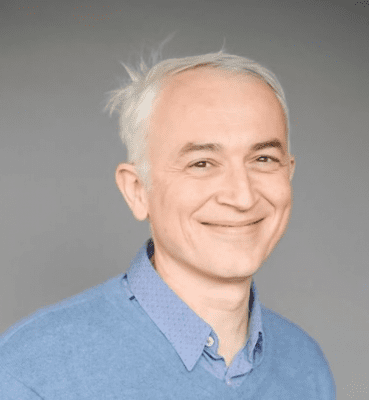 Prof. Vladan Vuletić, Lester Wolfe Professor of Physics at MIT, is a leading figure in atomic, molecular, and optical physics, with pioneering contributions to quantum science and technology. Born in Peć, Serbia (then Yugoslavia), and educated in Germany. In 1992, he earned his Physics Diploma with highest honors from the Ludwig-Maximilians-Universität München, and in 1997, a Ph.D. in Physics (summa cum laude). He then conducted postdoctoral research with Nobel Laureate Steven Chu at Stanford University as a Lynen Fellow of the Humboldt Foundation. After faculty appointments at Stanford and MIT, he rose to the rank of Full Professor at MIT in 2011. Vuletic is Director of the MIT-Harvard Center for Ultracold Atoms and Chair of the Division of Atomic, Molecular, and Optical Science of the American Physical Society.
Prof. Vladan Vuletić, Lester Wolfe Professor of Physics at MIT, is a leading figure in atomic, molecular, and optical physics, with pioneering contributions to quantum science and technology. Born in Peć, Serbia (then Yugoslavia), and educated in Germany. In 1992, he earned his Physics Diploma with highest honors from the Ludwig-Maximilians-Universität München, and in 1997, a Ph.D. in Physics (summa cum laude). He then conducted postdoctoral research with Nobel Laureate Steven Chu at Stanford University as a Lynen Fellow of the Humboldt Foundation. After faculty appointments at Stanford and MIT, he rose to the rank of Full Professor at MIT in 2011. Vuletic is Director of the MIT-Harvard Center for Ultracold Atoms and Chair of the Division of Atomic, Molecular, and Optical Science of the American Physical Society.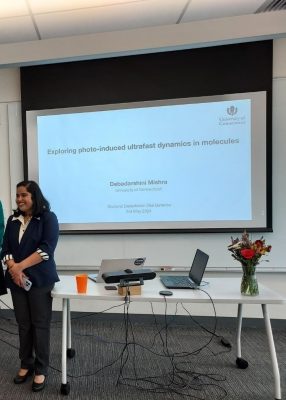 Debadarshini (Jolly) Mishra successfully defended her PhD thesis in May 2024 in Atomic, Molecular and Optical Physics. Jolly gave several presentations at national and international conferences and is the co-author of 8 publications. She is now a postdoc at Lawrence Berkeley National Lab and was hired before her thesis defense to contribute her research and learn new research techniques.
Debadarshini (Jolly) Mishra successfully defended her PhD thesis in May 2024 in Atomic, Molecular and Optical Physics. Jolly gave several presentations at national and international conferences and is the co-author of 8 publications. She is now a postdoc at Lawrence Berkeley National Lab and was hired before her thesis defense to contribute her research and learn new research techniques.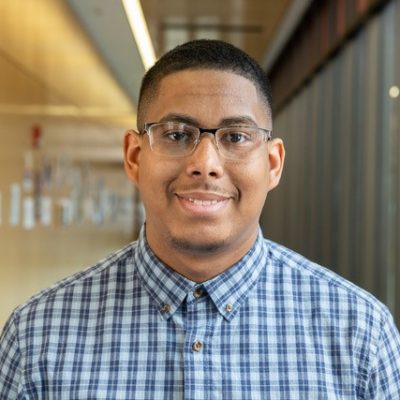 As part of his Ph.D. project, Jonathan Mercedes-Feliz has made very important contributions to our understanding of the interplay between supermassive black holes and galaxies using state-of-the-art supercomputing simulations that for the first time model the propagation and impact of powerful black hole-driven winds from the very center of galaxies all the way to the intergalactic medium. Using novel data analysis approaches, Jonathan has shown that these powerful winds can simultaneously enhance the rate of formation of stars in localized regions while dramatically suppressing the global growth of massive galaxies, explaining seemingly contradictory results from recent observations and previous theoretical models. Besides excelling in research, Jonathan is deeply committed to advancing diversity, equity, and inclusion, and he has been an invaluable mentor for undergraduate and high school students from historically excluded groups as part of the McNair Scholars program, the Center for Access and Postsecondary Success (CAPS) Summer Program, and the YSSS Jack Kent Cooke Scholars program at UConn. With his published Ph.D. work already attracting significant attention in the community, Jonathan has accepted a postdoctoral research position funded by the NASA Astrophysics Theory Program to lead the next generation of simulations modeling the co-evolution of black holes and galaxies as part of Prof. Anglés-Alcázar’s group at the University of Connecticut.
As part of his Ph.D. project, Jonathan Mercedes-Feliz has made very important contributions to our understanding of the interplay between supermassive black holes and galaxies using state-of-the-art supercomputing simulations that for the first time model the propagation and impact of powerful black hole-driven winds from the very center of galaxies all the way to the intergalactic medium. Using novel data analysis approaches, Jonathan has shown that these powerful winds can simultaneously enhance the rate of formation of stars in localized regions while dramatically suppressing the global growth of massive galaxies, explaining seemingly contradictory results from recent observations and previous theoretical models. Besides excelling in research, Jonathan is deeply committed to advancing diversity, equity, and inclusion, and he has been an invaluable mentor for undergraduate and high school students from historically excluded groups as part of the McNair Scholars program, the Center for Access and Postsecondary Success (CAPS) Summer Program, and the YSSS Jack Kent Cooke Scholars program at UConn. With his published Ph.D. work already attracting significant attention in the community, Jonathan has accepted a postdoctoral research position funded by the NASA Astrophysics Theory Program to lead the next generation of simulations modeling the co-evolution of black holes and galaxies as part of Prof. Anglés-Alcázar’s group at the University of Connecticut.
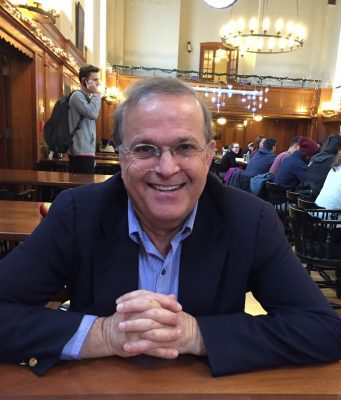
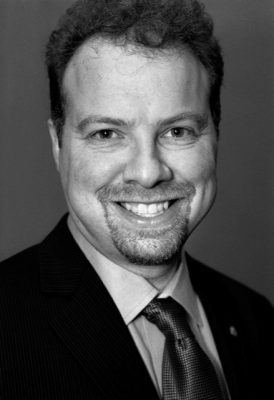 Adam Riess is a Bloomberg Distinguished Professor, the Thomas J. Barber Professor in Space Studies at the Krieger School of Arts and Sciences at Johns Hopkins University, a distinguished astronomer at the Space Telescope Science Institute and a member of the National Academy of Sciences. He received his bachelor’s degree in physics from the Massachusetts Institute of Technology in 1992 and his PhD from Harvard University in 1996. His research involves measurements of the cosmological framework with supernovae (exploding stars) and Cepheids (pulsating stars). Currently, he leads the SHOES Team in efforts to improve the measurement of the Hubble Constant and the Higher-z Team to find and measure the most distant type Ia supernovae known to probe the origin of cosmic acceleration.
Adam Riess is a Bloomberg Distinguished Professor, the Thomas J. Barber Professor in Space Studies at the Krieger School of Arts and Sciences at Johns Hopkins University, a distinguished astronomer at the Space Telescope Science Institute and a member of the National Academy of Sciences. He received his bachelor’s degree in physics from the Massachusetts Institute of Technology in 1992 and his PhD from Harvard University in 1996. His research involves measurements of the cosmological framework with supernovae (exploding stars) and Cepheids (pulsating stars). Currently, he leads the SHOES Team in efforts to improve the measurement of the Hubble Constant and the Higher-z Team to find and measure the most distant type Ia supernovae known to probe the origin of cosmic acceleration.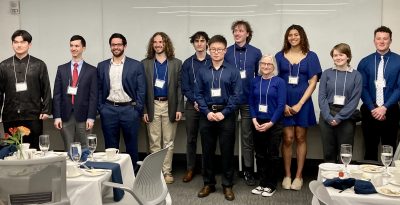
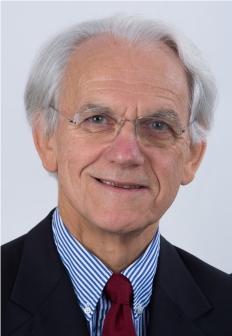 Gérard Mourou received his undergraduate education at the University of Grenoble (1967) and his Ph.D. from University Paris VI in 1973. He has made numerous contributions to the field of ultrafast lasers, high-speed electronics, and medicine. But, his most important invention, demonstrated with his student Donna Strickland while at the University of Rochester (N.Y.), is the laser amplification technique known as Chirped Pulse Amplification (CPA), universally used today. CPA revolutionized the field of optics, opening new branches like attosecond pulse generation, Nonlinear QED, and compact particle accelerators. It extended the field of optics to nuclear and particle physics. In 2005, Prof. Mourou proposed a new infrastructure, the Extreme Light Infrastructure (ELI), which is distributed over three pillars located in the Czech Republic, Romania, and Hungary. Prof. Mourou also pioneered the field of femtosecond ophthalmology that relies on a CPA femtosecond laser for precise myopia corrections and corneal transplants. Over a million such procedures are now performed annually. Prof. Mourou is a member of the U.S. National Academy of Engineering, and a foreign member of the Russian Science Academy, the Austrian Sciences Academy, and the Lombardy Academy for Sciences and Letters. He is Chevalier de la Légion d’honneur.
Gérard Mourou received his undergraduate education at the University of Grenoble (1967) and his Ph.D. from University Paris VI in 1973. He has made numerous contributions to the field of ultrafast lasers, high-speed electronics, and medicine. But, his most important invention, demonstrated with his student Donna Strickland while at the University of Rochester (N.Y.), is the laser amplification technique known as Chirped Pulse Amplification (CPA), universally used today. CPA revolutionized the field of optics, opening new branches like attosecond pulse generation, Nonlinear QED, and compact particle accelerators. It extended the field of optics to nuclear and particle physics. In 2005, Prof. Mourou proposed a new infrastructure, the Extreme Light Infrastructure (ELI), which is distributed over three pillars located in the Czech Republic, Romania, and Hungary. Prof. Mourou also pioneered the field of femtosecond ophthalmology that relies on a CPA femtosecond laser for precise myopia corrections and corneal transplants. Over a million such procedures are now performed annually. Prof. Mourou is a member of the U.S. National Academy of Engineering, and a foreign member of the Russian Science Academy, the Austrian Sciences Academy, and the Lombardy Academy for Sciences and Letters. He is Chevalier de la Légion d’honneur.